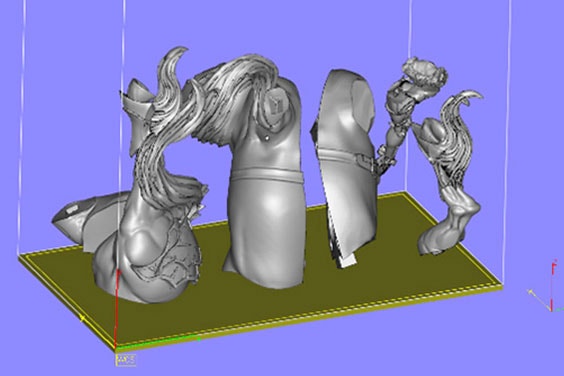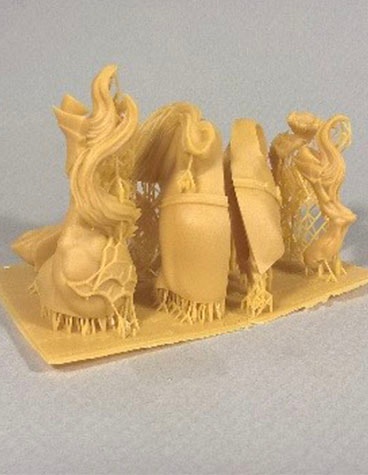CASE STUDY
Raging Heroes Fight Support Generation Time with Materialise e-Stage

Raging Heroes is a company based in France that creates collectible miniatures based on their own characters and worlds. These are sold all around the world to collectors, gamers, and painters and are recognized as some of the best in the industry. But how does Raging Heroes reach such an amazing level of detail at a tiny scale? They explored the benefits of 3D printing technology for their industry!
A new world of 3D-printed miniatures


3D printing allows Raging Heroes to sculpt tiny miniatures on a computer, creating a level of detail and complex poses and attitudes that cannot be achieved with traditional sculptures on a scale of 3cm. Furthermore, 3D printing allows them to print test poses, textures and alternatives cost-efficiently and quickly, which is almost impossible with traditional sculpting methods.
Up to 92 % reduced support generation time
Those experienced in stereolithography 3D printing know that you need to create adequate support structures to prevent your part from floating around on the build platform. Generating these support structures by hand takes a lot of time. Raging Heroes spent between 20 minutes to one hour generating support structures for each DLP build. Their build platform measures 71 x 40 x 76 mm. With Materialise e-Stage, our automatic support generation software, Raging Heroes could reduce this amount of time to less than five minutes.
A stunning result
“The automatic generation of the support structures is a real plus in the process. Both for the highly detailed masters as well as for quick prototypes at lower detail scale,” explains a freelance 3D artist at Raging Heroes.
“Furthermore, the finishing process after using Materialise e-Stage is really effective and easier than some other software packages with heavier supports. We can easily remove the support structures of big sculptures with many contact points. After the support removal, there are only a few marks on the prints, which can be smoothened in no time”.
In addition, Materialise e-Stage for bottom-up prints consists of a special algorithm to counter suction forces and specific parameters designed for bottom-up technology.
“We simply haven’t found a better solution in the market than Materialise e‑Stage.”


Horse pieces in Materialise Magics Horse pieces with e-Stage support structures



Build parts with support structures Build parts without support structures Assembled horse
Share on:
This case study in a few words
Consumer goods
Materialise e-Stage
Reduce the time it takes to generate support structures for miniatures
Automate the generation of support structures
Time reduced from between 20 and 60 minutes to less than 5 minutes
